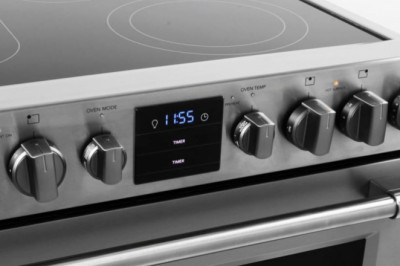views

FrSky receiver XM Plus vs XM, which one would be more suited for your build
We have previously seen an article about the FrSky receiver XM Plus and how small it is compared to the rest of the full-size receivers from FrSky and then looked at how to wire it up to your flight controller.
In this FrSky XM Plus vs XM, we will see which one would be more suited for your build.
To save you time, here is the gist:
The XM+ is the obvious choice between XM Plus and the XM due to the diversity functionality. But if you are extremely low on space, get the XM. The range is similar in either case as the receiver has only antenna diversity; which is only slightly better than a single antenna unlike real diversity which provides much better coverage based on the antenna placement and alignement.
FrSky XM Receiver
The FrSky XM is one of the smallest and tiniest receivers from FrSky which proposes full-range capability which makes it different from other 3rd party receivers where you wont get the full range provided by the FrSky transmitter system.
Pinout
The pin out of the XM FrSky receiver is quite simple, it has just 3 pins in total. One for POWER (3.5-10V), one for GND & one for SIGNAL, this makes it extremely easy to connect it to your flight controller for effortless SBUS communication The channel 16 can be used as an RSSI digital output to your FC via the SBUS signal line or you can tap into the hardware analog RSSI output on the receiver as well in case you would like to have an analog output of radio signal to an auxiliary device.
Power
The XM receiver takes anywhere from 3.5V all the way to 10V for power requirements and take as little as 20mA during operation which means it can even be used in power constrained devices as well.
Footprint
The footprint of the XM is as tiny as it gets, measuring at just 15*10*3.5mm (LxWxH) . This makes it the perfect choice for size constraint build such as tiny whoops and other small crafts where size and weight are of a concern.
Specifications of the FrSky XM:
Compatibility
FrSky D16 mode
Dimension
15*10*3.5(L x W xH)
Weight
1g
Operating Range
>600m (LOS)
Operating Voltage Range
3.5~10V
Operating Current
20mA@5V
Number of Channels
Up to 16CH from SBUS(CH1~CH15 for PWM,CH16 RSSI for FC)
FrSky XM Plus
The FrSky XM Plus is similiar to the XM in almost every way except two key areas - diversity and dimensions. The XM Plus has diversity setup (antenna diversity) and a slightly larger footprint which makes it different from the XM.
When compared to the XM receiver, there are two notable differences in the XM+. One is that it is slightly larger than the XM & the other is the addition of the diversity antennas system.
Pinout
Just like the XM receiver the pinout of the FrSky XM Plus is the same with only 3 pins - Power, Signal & Ground which makes it easy to wire and connect to flight controllers and just like the XM, you have the option to use CH16 as digital RSSI output.
Power
The current consumption of the XM Plus is slightly higher than the XM at 30mA while operating at 5V. The receiver can use from 3.7V all the way to 10V for its operation.
Footprint
The footprint as dicussed before is slightly larger than the XM receiver at 21.5*12.*3.5mm and 1.6g. But even at this size and weight, even small whoops and crafts can use this FrSky receiver.
Specifications
Compatibility
FrSky D16 mode
Dimension
21.5*12*3.5mm(L x W x H)
Weight
1.6g
Operating Range
Full range
Operating Voltage Range
3.7V~10V
Operating Current
30mA@5V
Number of Channels
Up to 16CH from SBUS(CH1~CH15 for PWM, CH16 RSSI for FC)
Conclusion
We have discussed the pros & cons between the FrSky XM & FrSky XM receivers. In 99% of the cases, I would suggest going for the XM Plus over the standard XM and in the rare cases that require the smallest possible footprint, weight and power consumption only go for the XM receiver. The antenna diversity, though provides only a marginal difference, is still a noticeable difference in range, especially indoors.












